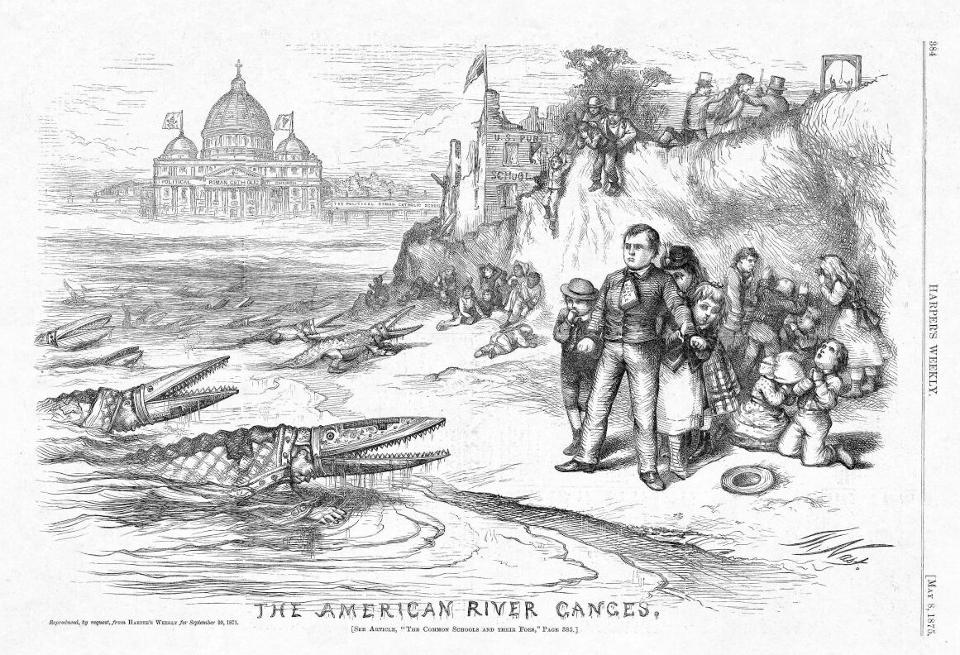Blaine, who had the support of President Grant, sought to amend the U.S. Constitution to forbid any public funds from ever touching a religious institution. While he failed at the national level, his supporters took their case to the states and won popular support – 37 times over. While they differ in wording and effect state by state, each provision generally prohibits “state legislatures (and often other governmental entities) from appropriating funds to religious sects or institutions, including religious schools.”
The Supreme Court’s decision means the scholarship program that the Montana Legislature created to give parents like Kendra Espinoza a choice of schools – including religious schools – can stand. Not only is it constitutional, but it’s good practice. As former U.S. Solicitor General Paul Clement argued in an amicus brief filed on behalf of the Center for Education Reform (in full disclosure, my organization), while the decision is based squarely on the First Amendment, the byproduct will be better educational outcomes. Decades’ worth of data reinforce and help explain the reality that educational outcomes are improved when parents have the opportunity to fully exercise their constitutional right to direct their children’s education. States with educational choice programs perform better on national assessments – particularly among lower income students – than states that offer few or no choices. Poor and minority students who attend Catholic schools, which make up the bulk of private options in the U.S. and are most affected by this decision, perform better over the course of their education and into life than students who attend public schools in similar communities.
There are many reasons that the availability of choices improves education outcomes. One explanation, according to Forbes contributor Michael B. Horn, is that “[each] child has different learning needs at different times.” The science of learning that has evolved from brain research in just the last two decades confirms this. As Todd Rose, director of the Mind, Brain and Education program at the Harvard Graduate School of Education has written, there is no such thing as an average brain; every person’s brain operates differently. A child’s individual learning style stems from the unique way that his or her brain “retrieve[s] information and create[s] memory.”
A school system that confines students to one avenue for learning will not truly optimize learning for any student. But that’s precisely the approach we – in the U.S. – have taken in education for more than a century, and it hasn’t worked well for the people who most need it to do so. Fewer than 35 percent of all students lack proficiency in core subjects; among low socio-economic groups the data is far worse. Thus as advocates for Espinoza have argued, parents should be afforded the right to choose the educational institution that they feel best serves their children, independent of a family’s socio-economic status or the form that learning may take. And while in the past the fact that such choices might include religious schools has deterred states from enacting such programs, we now have a ruling that validates such choices. “We have repeatedly held that the Establishment Clause is not offended when religious observers and organizations benefit from neutral government programs,” says the majority opinion. In other words, the program is for parents, not for religion. The choice the parent makes independently makes the government a neutral party to that choice. That the school the plaintiffs chose for their children is religious does not make the choice religious.
Justices Alito and Thomas, in their concurring Espinoza opinions, both make that case, while dissenting opinions issued by Justices Ginsburg joined by Kagan, Breyer joined by Kagan, and Sotomayor put all their focus on whether the establishment clause permits public funds to be spent on religious education. Court observers note that Espinoza was one of the last decisions to come out from the January argument, no doubt because there were so many opinions and dramatic implications for public education. The educational establishment, which sided with the Montana Supreme Court, is outraged at the decision.
National Education Association president Lily Eskelsen García, representing the largest teachers union in the nation, called the decision “extreme,” while her counterpart in the American Federation of Teachers’ Randi Weingarten said it was a “threat to public education.” The teachers unions argue that nullifying Blaine Amendments, despite their scurrilous past, will lead to more educational choice programs, which they oppose. The decision in Espinozadoes not directly cause such programs to evolve, however. But with Blaine found to be inconsistent with the U.S. Constitution, policymaking bodies will now be more motivated to enact such programs. Their success may result in millions more children having access to school options, many of which are currently out of reach of most students, assigned to school by zip code.
These assignments, once redlined into existence by systemic housing discrimination, undermine educational excellence for millions, and should be the next injustice we all unite against. Espinoza clears the way for that fight.
















